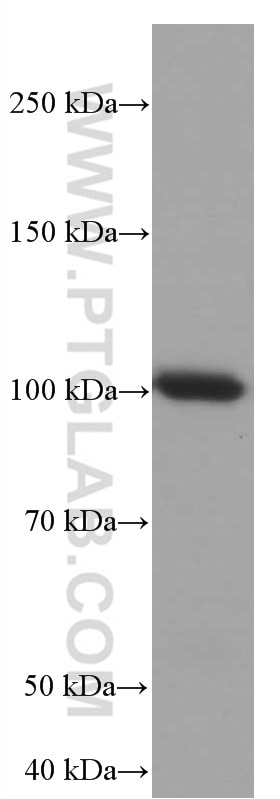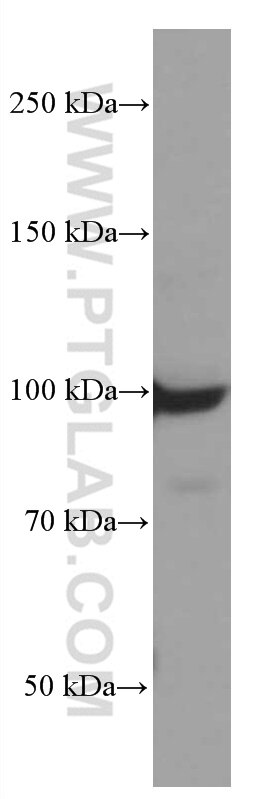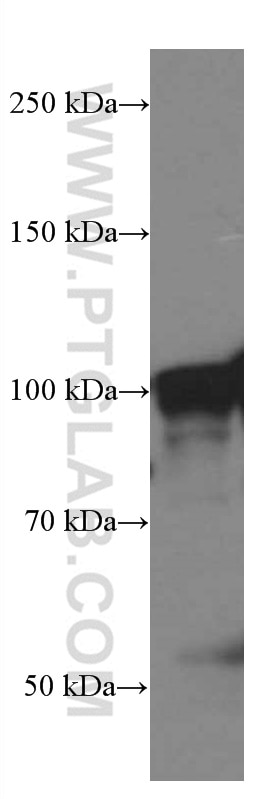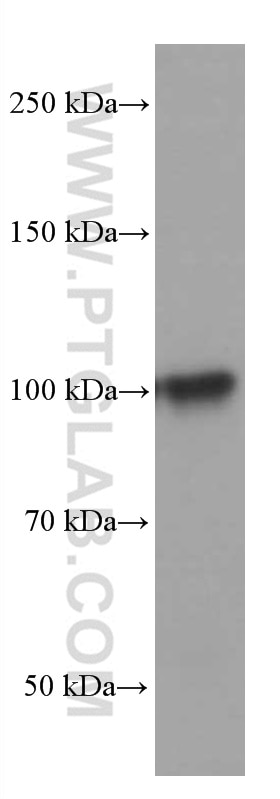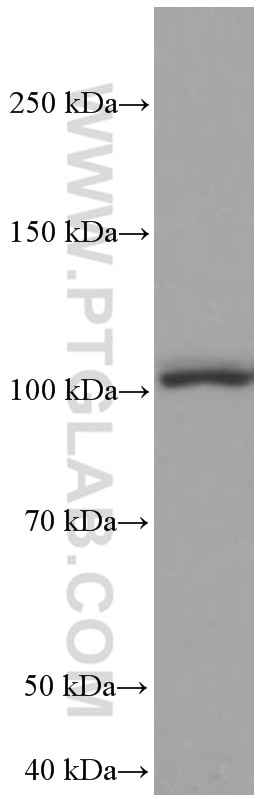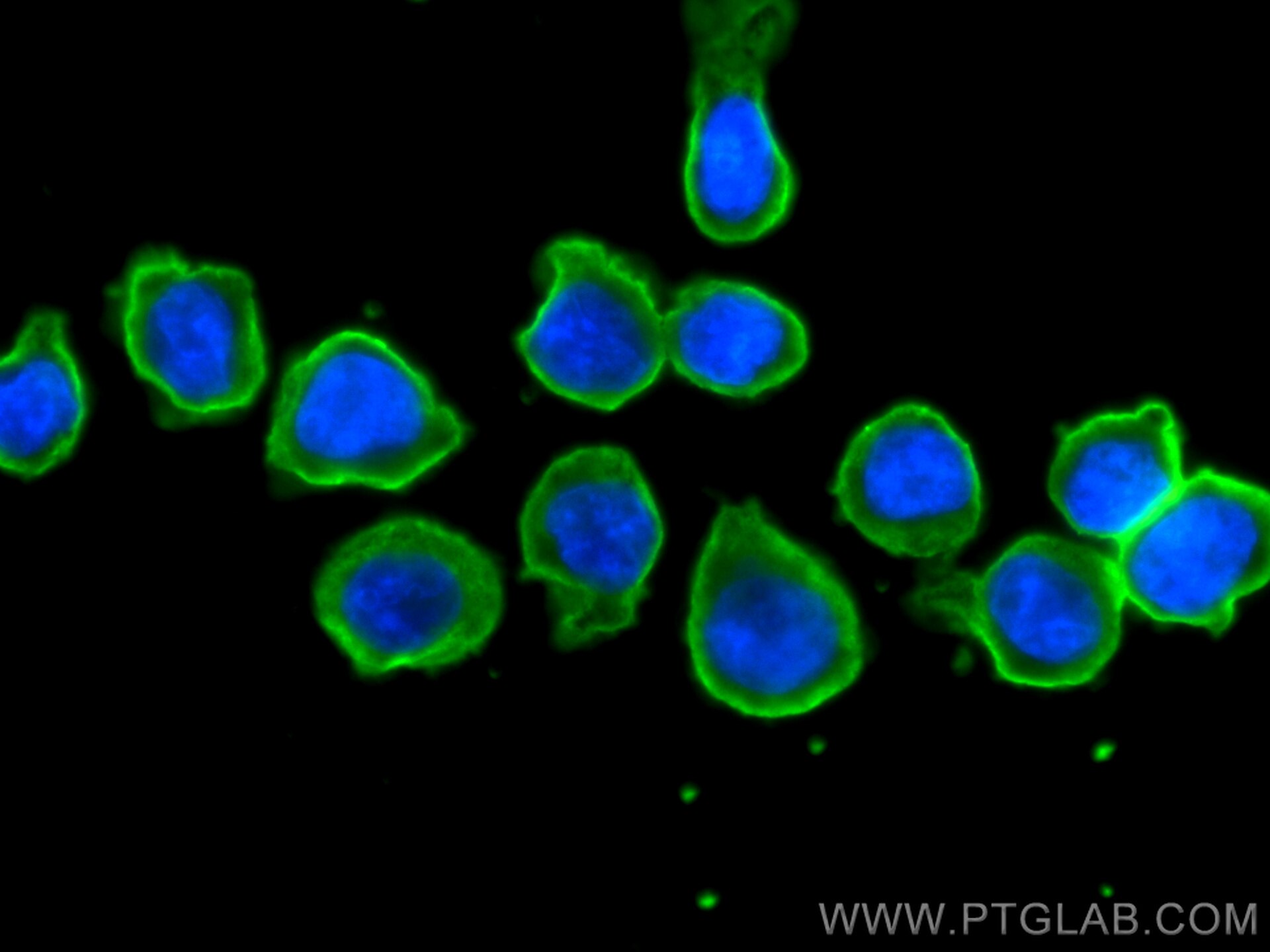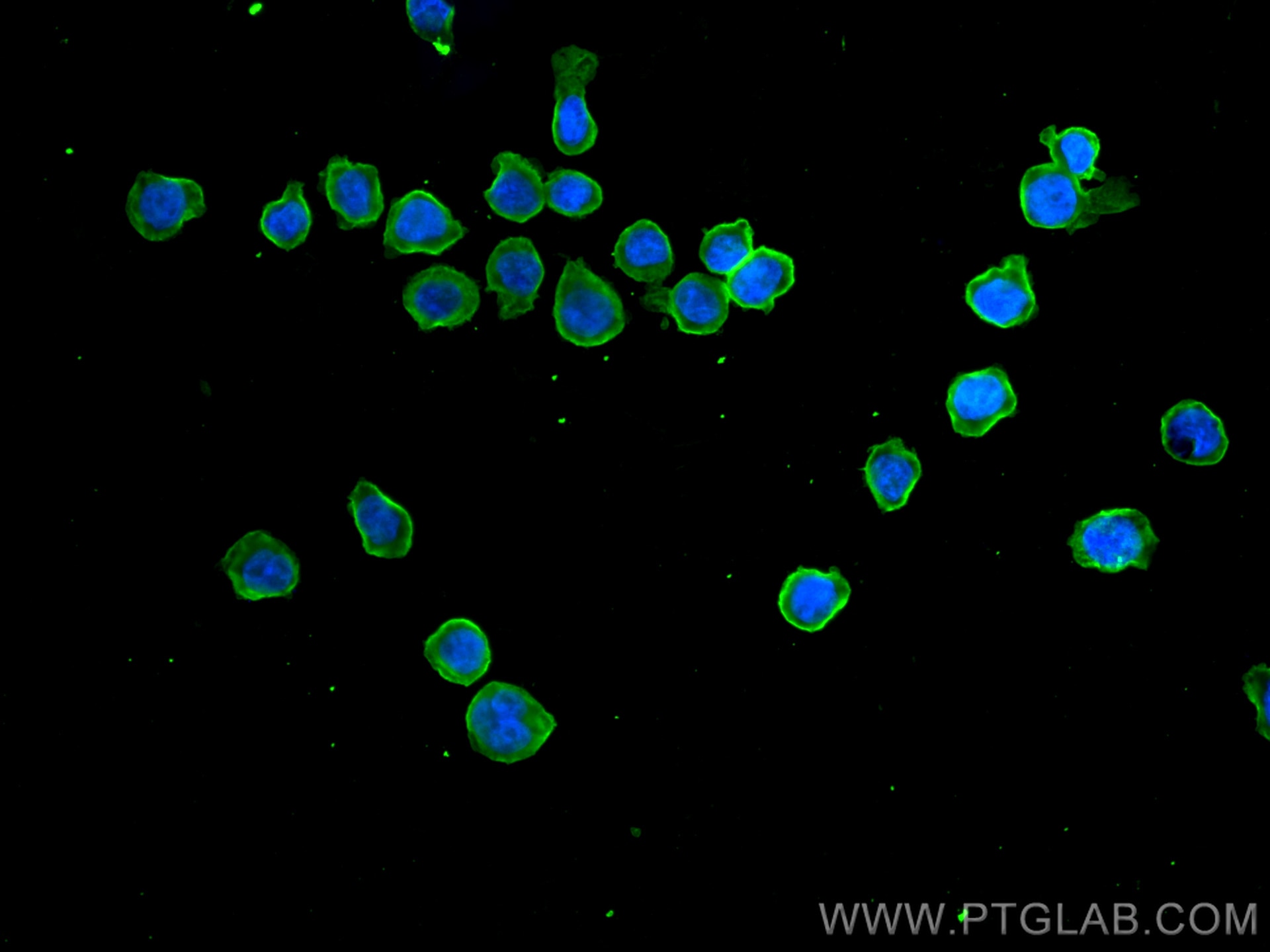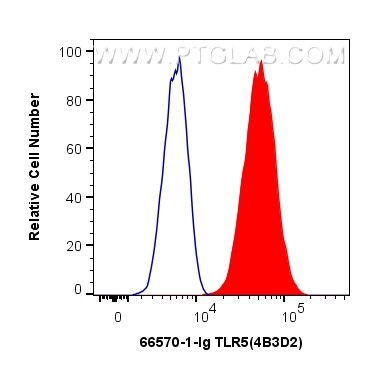Anticorps Monoclonal anti-TLR5
TLR5 Monoclonal Antibody for WB, IF/ICC, FC (Intra), ELISA
Hôte / Isotype
Mouse / IgG1
Réactivité testée
Humain, porc, rat, souris
Applications
WB, IF/ICC, FC (Intra), ELISA
Conjugaison
Non conjugué
CloneNo.
4B3D2
N° de cat : 66570-1-Ig
Synonymes
Galerie de données de validation
Applications testées
| Résultats positifs en WB | cellules A549, cellules HeLa, cellules RAW 264.7, cellules THP-1, tissu splénique de rat |
| Résultats positifs en IF/ICC | cellules THP-1, |
| Résultats positifs en FC (Intra) | cellules THP-1, |
Dilution recommandée
| Application | Dilution |
|---|---|
| Western Blot (WB) | WB : 1:1000-1:6000 |
| Immunofluorescence (IF)/ICC | IF/ICC : 1:400-1:1600 |
| Flow Cytometry (FC) (INTRA) | FC (INTRA) : 0.40 ug per 10^6 cells in a 100 µl suspension |
| It is recommended that this reagent should be titrated in each testing system to obtain optimal results. | |
| Sample-dependent, check data in validation data gallery | |
Applications publiées
| WB | See 1 publications below |
Informations sur le produit
66570-1-Ig cible TLR5 dans les applications de WB, IF/ICC, FC (Intra), ELISA et montre une réactivité avec des échantillons Humain, porc, rat, souris
| Réactivité | Humain, porc, rat, souris |
| Réactivité citée | souris |
| Hôte / Isotype | Mouse / IgG1 |
| Clonalité | Monoclonal |
| Type | Anticorps |
| Immunogène | TLR5 Protéine recombinante Ag13840 |
| Nom complet | toll-like receptor 5 |
| Masse moléculaire calculée | 858 aa, 98 kDa |
| Poids moléculaire observé | 100 kDa |
| Numéro d’acquisition GenBank | BC109119 |
| Symbole du gène | TLR5 |
| Identification du gène (NCBI) | 7100 |
| Conjugaison | Non conjugué |
| Forme | Liquide |
| Méthode de purification | Purification par protéine G |
| Tampon de stockage | PBS with 0.02% sodium azide and 50% glycerol |
| Conditions de stockage | Stocker à -20°C. Stable pendant un an après l'expédition. L'aliquotage n'est pas nécessaire pour le stockage à -20oC Les 20ul contiennent 0,1% de BSA. |
Informations générales
TLR5 belongs to the Toll-like receptor family which are important in the innate immune response to pathogens. TLRs are highly conserved from Drosophila to humans and share structural and functional similarities. TLR5 is known to recognize bacterial flagellin from invading mobile bacteria. TLR5 acts via MYD88 and TRAF6, leading to NF-kappa-B activation, cytokine secretion and the inflammatory response. Mutations in TLR5 gene have been associated with both resistance and susceptibility to systemic lupus erythematosus, and susceptibility to Legionnaire disease.
Protocole
| Product Specific Protocols | |
|---|---|
| WB protocol for TLR5 antibody 66570-1-Ig | Download protocol |
| IF protocol for TLR5 antibody 66570-1-Ig | Download protocol |
| Standard Protocols | |
|---|---|
| Click here to view our Standard Protocols |
